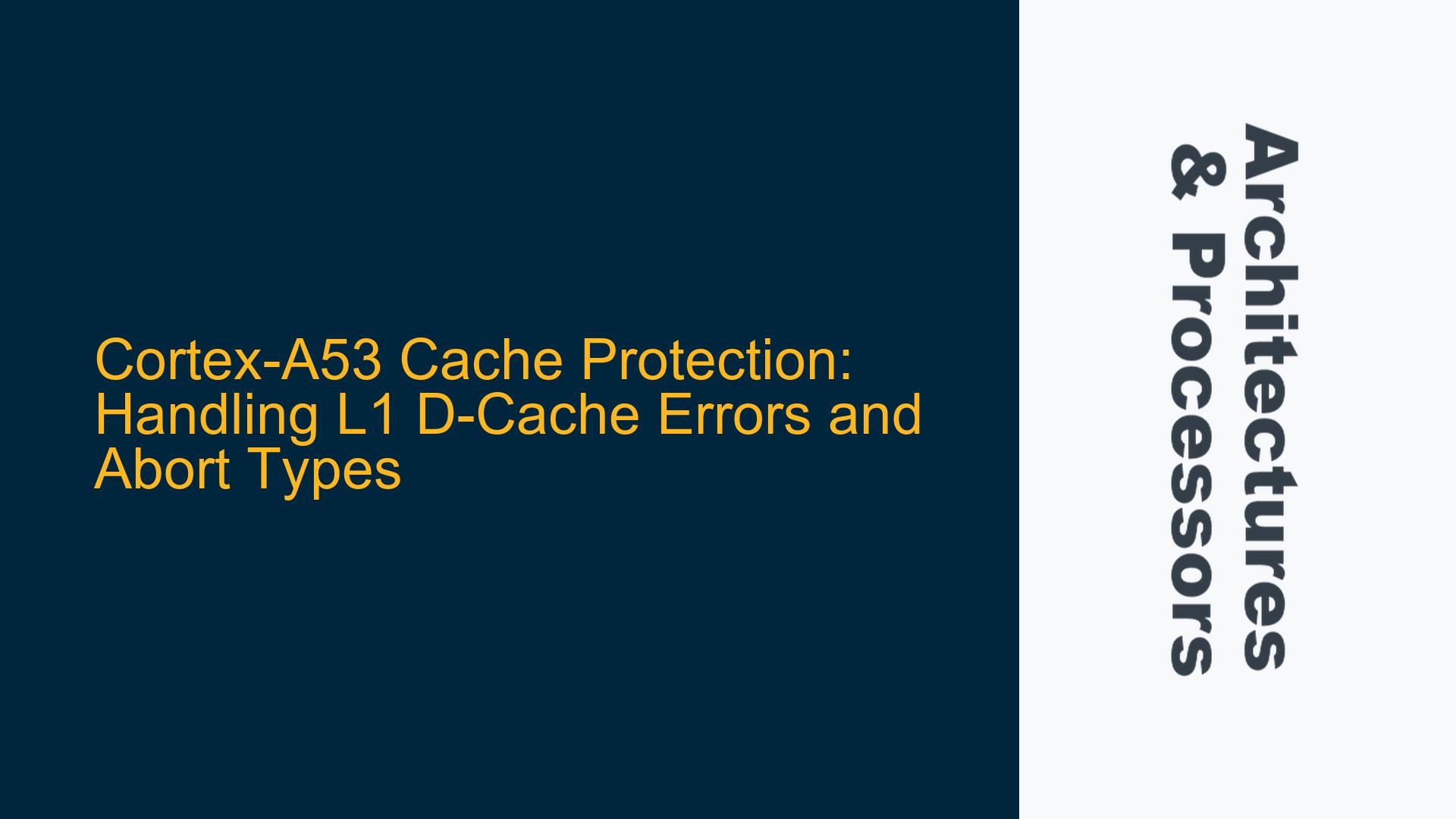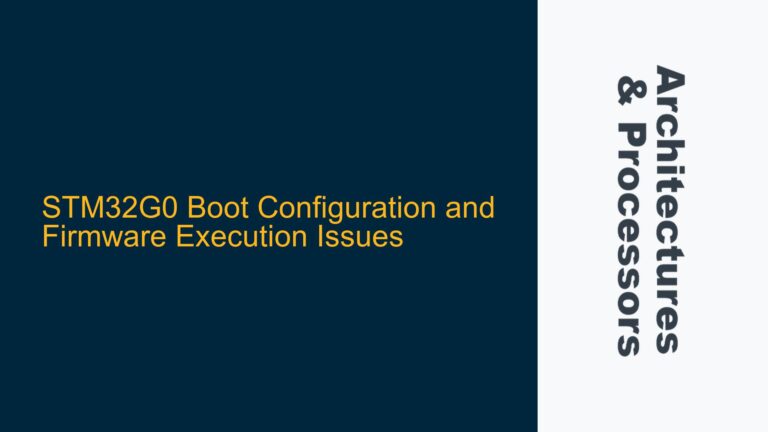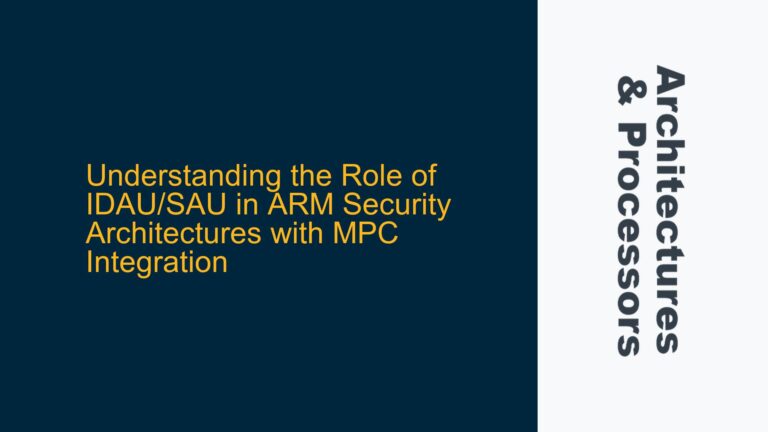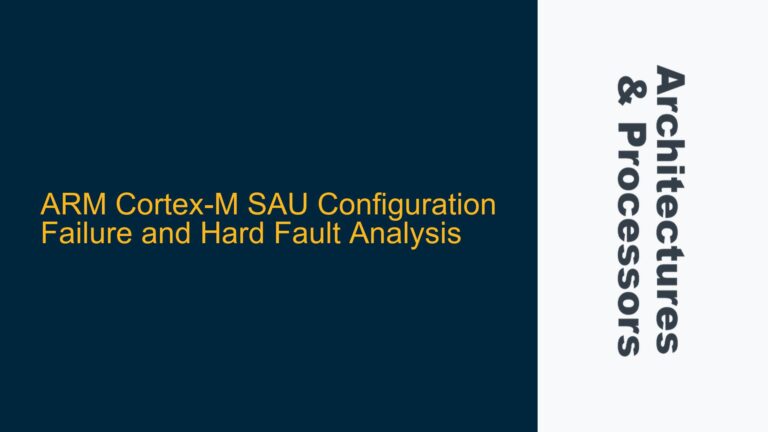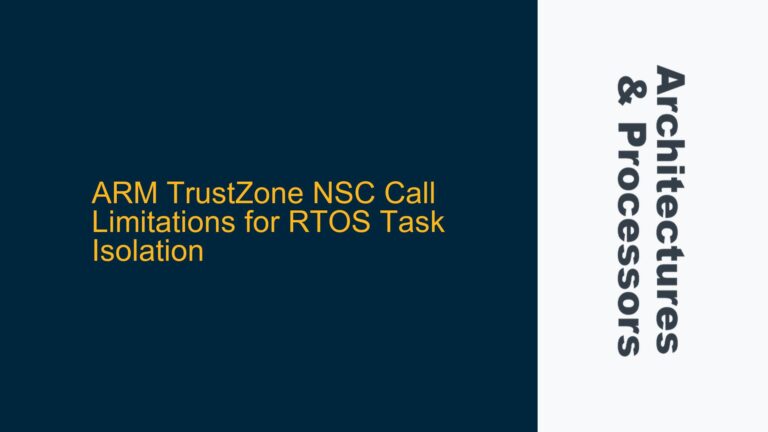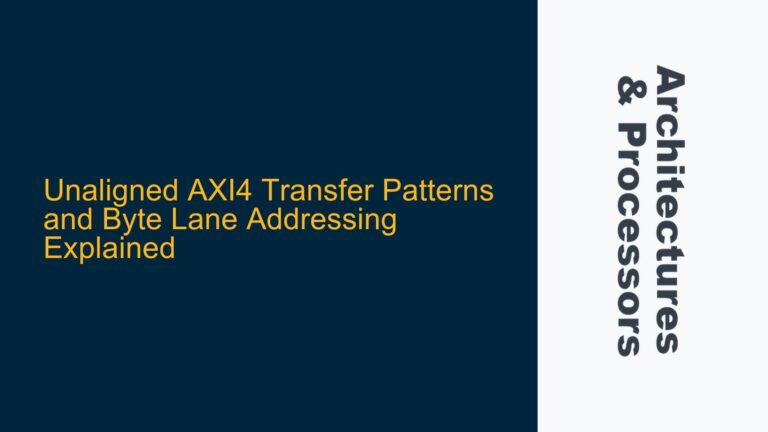L1 D-Cache Data and Dirty Error Reporting Mechanisms
The Cortex-A53 processor, a widely used ARMv8-A architecture core, implements sophisticated cache error detection and correction mechanisms to ensure data integrity and system reliability. The L1 Data Cache (D-Cache) in the Cortex-A53 is particularly critical, as it directly interfaces with the processor’s load/store unit and is responsible for handling data accesses at high speeds. The Cortex-A53 L1 D-Cache employs two distinct error detection and correction schemes: Single Error Correction, Double Error Detection (SEC-DED) for data errors and Single Error Detection, Single Error Correction (SED-SEC) for dirty state errors.
SEC-DED is a robust error-correcting code (ECC) mechanism that can detect and correct single-bit errors while detecting double-bit errors. This ensures that single-bit errors, which are more common due to factors like cosmic radiation or electrical noise, do not lead to data corruption. SED-SEC, on the other hand, is used for detecting and correcting errors in the dirty state of cache lines. The dirty state indicates whether a cache line has been modified and needs to be written back to main memory. Errors in the dirty state can lead to data inconsistency if not handled properly.
When an uncorrectable error occurs in the L1 D-Cache, the Cortex-A53 processor must take appropriate action to prevent further corruption and ensure system stability. The Core Technical Reference Manual specifies that uncorrectable errors in the L1 D-Cache data or dirty state can be triggered by load, store, or preload instructions, or by the hardware prefetcher. However, the manual does not explicitly state the type of abort generated in these cases, leaving room for interpretation and potential confusion.
Synchronous Data Aborts vs. Asynchronous SystemErrors in L1 D-Cache Errors
The Cortex-A53 processor can generate two types of aborts in response to errors: synchronous data aborts and asynchronous SystemErrors. Synchronous data aborts are precise exceptions that occur immediately after the instruction causing the error, allowing the processor to pinpoint the exact instruction that triggered the fault. These aborts are typically used for recoverable errors or errors that require immediate software intervention. Asynchronous SystemErrors, on the other hand, are imprecise exceptions that can occur at any time, often due to hardware faults or uncorrectable errors. These errors are typically non-recoverable and may require a system reset.
In the context of L1 D-Cache errors, the type of abort generated depends on the nature of the error and the processor’s configuration. For SEC-DED errors in the L1 D-Cache data, the processor may generate a synchronous data abort if the error is detected during a load or store operation. This allows the software to handle the error gracefully, potentially by retrying the operation or invalidating the affected cache line. However, if the error is uncorrectable and detected by the hardware prefetcher, the processor may generate an asynchronous SystemError, as the prefetcher operates independently of the instruction stream.
For SED-SEC errors in the L1 D-Cache dirty state, the situation is more complex. Dirty state errors can lead to data inconsistency if the affected cache line is evicted or written back to memory. In such cases, the processor may generate an asynchronous SystemError to indicate a severe hardware fault. However, if the error is detected during a load or store operation, a synchronous data abort may be generated to allow software intervention.
The nINTERRIRQ pin is another mechanism for signaling errors in the Cortex-A53 processor. This pin is typically used to indicate uncorrectable errors that require immediate attention from the system’s error handling logic. When the nINTERRIRQ pin is asserted, the system may initiate a reset or other recovery procedures. However, the assertion of this pin does not necessarily preclude the generation of synchronous or asynchronous aborts.
Implementing Cache Error Handling and Recovery Strategies
To effectively handle L1 D-Cache errors in the Cortex-A53 processor, developers must implement robust error detection, reporting, and recovery mechanisms. The first step is to configure the processor’s error reporting registers to capture detailed information about the error, including the type of error, the cache level, and the address of the affected cache line. This information is critical for diagnosing the root cause of the error and implementing appropriate recovery strategies.
For synchronous data aborts, the software exception handler must carefully analyze the error information and determine the appropriate course of action. In some cases, the handler may simply invalidate the affected cache line and retry the operation. In other cases, the handler may need to log the error and trigger a system reset if the error is deemed unrecoverable. The handler should also ensure that any pending memory operations are completed before taking corrective action, as incomplete operations can lead to data corruption.
For asynchronous SystemErrors, the system’s error handling logic must be designed to handle imprecise exceptions. This typically involves logging the error, capturing a system snapshot for post-mortem analysis, and initiating a controlled shutdown or reset. The error handling logic should also ensure that critical system state is preserved, as this information can be invaluable for diagnosing the root cause of the error.
In addition to software-based error handling, developers should also consider hardware-based mechanisms for mitigating cache errors. For example, the Cortex-A53 processor supports cache parity protection, which can detect and correct single-bit errors in the cache tags. Enabling parity protection can significantly reduce the likelihood of cache errors and improve system reliability. Similarly, the processor’s memory management unit (MMU) can be configured to use ECC-protected memory, which can detect and correct errors in main memory.
Finally, developers should thoroughly test their error handling and recovery mechanisms to ensure that they function correctly under a wide range of error conditions. This includes injecting synthetic errors into the system and verifying that the error handling logic responds appropriately. Stress testing the system under high load and adverse environmental conditions can also help identify potential weaknesses in the error handling mechanisms.
By implementing comprehensive error detection, reporting, and recovery strategies, developers can ensure that their Cortex-A53-based systems are robust and reliable, even in the face of uncorrectable cache errors. This not only improves system uptime but also enhances the overall user experience by minimizing the impact of hardware faults.
